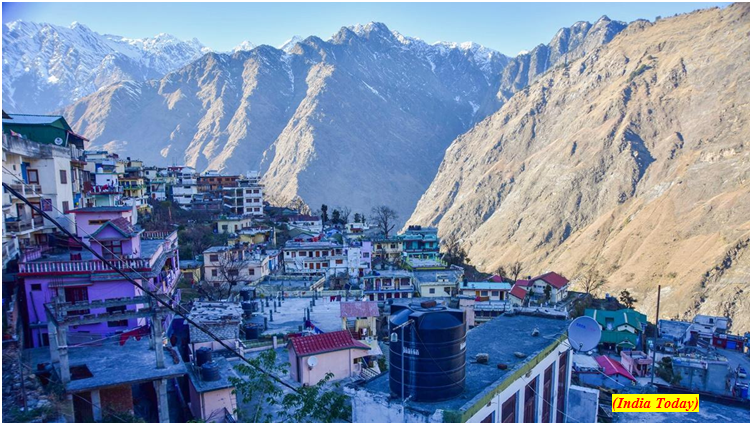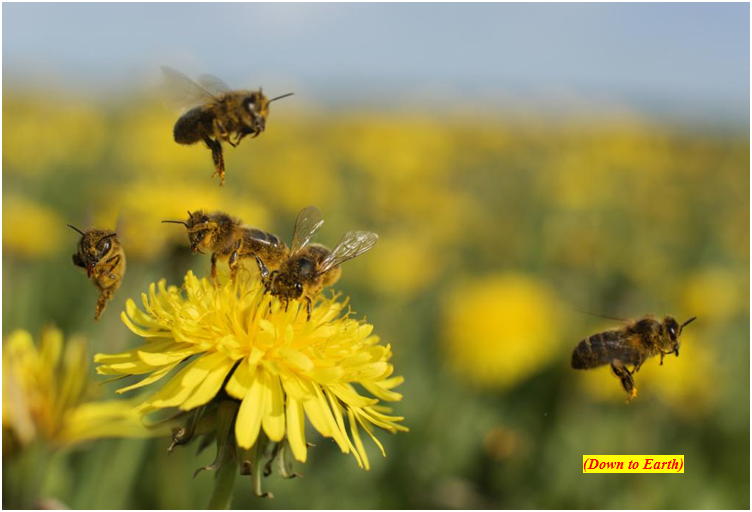Department of Telecommunications formulates the Indian Telegraph (Infrastructure Safety) Rules 2022 (GS Paper 2, Governance)

Why in news?
- The Department of Telecommunications under the Ministry of Communications has formulated the Indian Telegraph (Infrastructure Safety) Rules 2022.
- Digital Infrastructure and Services are increasingly emerging as key enablers and critical determinants of a country’s growth and well-being.
Background:
- The Central government has therefore envisioned fulfilling the communication needs of the citizens and enterprises through establishment of a resilient, secure, accessible and affordable Digital Communications Infrastructure and Services.
- Government/ TSPs/ IPs together have established the much-required pan India telecom infrastructure networks for various telecom sector issues of concern.
- Various agencies often undertake excavation activities wherein underground utility assets get damaged wither due to lack of knowledge of agencies about existing utilities or lack of coordination with utility asset owner agencies.
- These damages cause economic loss to utility asset owners as well as business loss and inconvenience to the public. In Telecom Sector alone, there are nearly 10 lakh OFC cuts per year causing an economic loss of approx. Rs 3000 Crore/year.
Salient features:
- Any person wishes to exercise a legal right to dig or excavate any property which is likely to cause damage to a telegraph infrastructure shall give notice to the licensee, prior to commencement, through common portal.
- The information shall include the name and address of the person exercising the legal, agency details, contact details, date and time of start of the exercise, description and location of the exercise, and the reasons for such dealing.
- The licensee shall, as expeditiously as possible, provide through the common portal, the details of telegraph infrastructure owned/ controlled/ managed by them, falling under/ over/ along the property with which the person intends to deal, alongwith precautionary measures for coordination in avoiding damages to the telegraph infrastructure.
- Excavators/utility asset owners will be given alerts via SMS, email and in-app notification and will also have the facility of ‘Click to call’ from the app itself.
- The person digging or excavating shall take appropriate action on precautionary measures provided by the licensee.
- In case no licensee provides details within the prescribed time, the person having legal right to dig or excavate shall be free to dig or excavate the property thereafter.
- Further, any person, who has dug/excavated any property causing damage to a telegraph infrastructure, shall be liable to pay the damage charges to the telegraph authority.The damage charges shall be computed based on such expenses as may be incurred in restoring damages.
- Once the asset owner agencies map their underlying assets with GIS coordinates on PM GatiShakti NMP platform, it will also be possible to know the presence of underlying utility assets, at the point of interest, before start of excavation.
Advantages (For Government – Central & State/UTs):
- Many utilities can be saved from unwanted cuts and wasteful cost towards restoration, thus saving thousands of crores for businesses and associated tax loss to Govt.
Advantages (For Citizens):
- Inconvenience caused to citizens because of frequent breakdown may be reduced due to better synergy between the agencies.
Why is Joshimath sinking? Alarm bells in hill town ringing since 1976
(GS Paper 3, Environment)
Why in news?
- Recently, Joshimath is making headlines for the wrong reason: it is sinking.
- Residents are protesting and have raised concerns about the land beneath the town sinking. Residents say houses have developed cracks and that they are forced to find support structures to keep their homes from falling under their own weight.
- Over 500 houses in the region have developed cracks.

Location:
- Joshimath is a hilly town located on the Rishikesh-Badrinath National Highway (NH-7) in the state of Uttarakhand.
- The city serves as a tourist town as it acts as an overnight rest stop for people visiting Badrinath, Auli, Valley of Flowers, and Hemkund Sahib, among other important religious and tourist locations in the state.
- Joshimath is also of great strategic importance to the Indian armed forces and is home to one of the Army's most important cantonments.
- The town is located on a running ridge that is traversed by running streams with a high gradient from Vishnuprayag, a confluence of the Dhauliganga and the Alaknanda rivers. A 2022 report stated that the area around Joshimath is covered with thick layers of overburdened material.
Mishra Commission:
- While the panic over the Joshimath sinking is making headlines now, scientists and geologists working in the area have been sounding the alarm for decades.
- The first such report indicating the grave problem that could threaten life and property came in 1976. That report by the government-appointed Mishra Commission pointed that Joshimath is located on the site of an ancient landslide.
Why is Joshimath sinking?
- The biggest reason why Joshimath is sinking is related to the geography of the town. The landslide debris on which the city was established has a low bearing capacity and experts have long warned that it cannot support a high rate of construction.
- Increased construction, hydroelectric projects, and the widening of the National Highway have made the slopes highly unstable in the last couple of decades.
- Erosion due to the running streams from Vishnuprayag and sliding along the natural streams are the other reasons behind the city's fate. Scattered rocks in the area are covered with old landslide debris comprising boulders, gneissic rocks, and loose soil.
- According to a 2022 survey conducted by researchers from the Wadia Institute of Himalayan Geology, these gneissic rocks are highly weathered and have a low cohesive value with a tendency of high pore pressure when saturated with water, especially during monsoons.
- Essentially, the land and the soil under Joshimath have a low capacity of holding together, especially when burdened with extra construction.
Drainage system:
- Seepage from streams uphill has been observed, which may have loosened the soil of Joshimath. The nalas disappear underground and arise overground downhill, bringing totally muddy water, and then join the Dhauliganga or the Alaknanda (beyond Vishnuprayag).
- The drainage system of the town of Joshimath is not well maintained. Waste water from the days' usage flows through improper drains.
- The nalas have been blocked by sludge that came from the 2013 Himalayan tsunami, which also facilitated the toe erosion in the region.
- The Rishiganga flood disaster also worsened the situation, followed by incessant rainfall between August to October in 2021.
What can be done to save Joshimath?
- Experts recommend a complete shutdown of development and hydroelectric projects in the region. But the urgent need is to relocate the residents to a safer place and then reimagine the town's planning to accommodate the new variables and the changing geographical factors.
- Drainage planning is one of the biggest factors that needs to be studied and redeveloped.
- The city is suffering from poor drainage and sewer management as more and more waste is seeping into the soil, loosening it from within. The irrigation department has been asked by the state government to look into the issue and create a new plan for the drainage system.
- Experts have also suggested replantation in the region, especially at the vulnerable sites to retain soil capacity.
- There is a need for a coordinated effort between the government and civil bodies with the aid of military organizations like the BRO to save Joshimath.
Worlds first vaccine for honeybees gets conditional nod in US
(GS Paper 3, Science and Tech)
Why in news?
- The United States Department of Agriculture (USDA) has granted a conditional license for a vaccine for honeybees to curb American foulbrood (AFB), a fatal bacterial disease for the insect.

American foulbrood (AFB):
- AFB is caused by the spore-forming bacterium Paenibacillus larvae. Infected broods usually die at the pre-pupal or pupal stage.
- It is not a stress-related disease and can infect the strongest to the weakest colony in an apiary. Heavy infections can affect most of the brood, severely weakening the colony and eventually killing it.
- The disease cannot be cured, meaning that the destruction of infected colonies and hives or irradiation of infected material is the only way to manage AFB.
- The bacteria Melissococcus plutonius causes another similar disease, European foulbrood. However, the incidence of EFB is generally higher when the colony is under stress.
Vaccine:
- The first such vaccine, developed by biotechnology company Dalan Animal Health, gives hope of a new weapon against diseases that routinely ravage colonies relied upon for food pollination.
- The vaccine technology exposes queen bees to inactive (ie, “dead”) bacteria, which enables the larvae hatched in the hive to resist infection.
How it works?
- The vaccine is mixed in queen candy — the primary food source for both the queen bees and the attendant bees living in cages.
- Worker bees consume the vaccine with the queen candy, which is then digested and transferred to the glands that produce the royal jelly. Worker bees then feed the royal jelly containing the vaccine to the queen bee.
- The queen digests the royal jelly and the vaccine is transferred to her ovaries. She is then released into the hive. The vaccine gets transferred to the developing eggs. The developing larvae get vaccinated and are more immune to infection as they hatch.
- The immune priming showed no negative impact on queen fitness in tests, the company claimed. Tests also showed no negative impact on honey.
Honeybee population:
- Honeybee populations are declining sharply, spurred by habitat loss, pesticide use and the climate crisis.
- Fewer honeybees mean not just less honey but also less food, honeybees are critical to pollinating up to 95 crops in the US.




